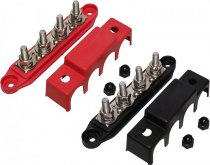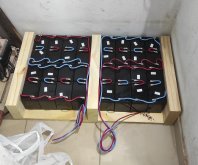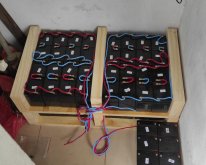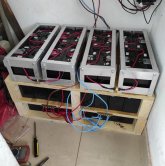WoodsieLord
New Member
I'm building a 24V lead acid battery bank and I was going to mount both positive and negative bus bars onto the wood structure that will hold the batteries in place.
I saw a thread recently where a user shared a near disaster experience where wood planks were in contact with LiFePO4 cells. My personal and non-professional point of view is that wood should be non conductive for 12V~24V.
Should I under no circumstances screw the bus bars to the wood? You think I'm a mad man?
What would you do in my place?
I already have the wood structure ready and the 125A (I think they're some kind of brass alloy) bus bars. They are advertised as (AC) ground bus bars.
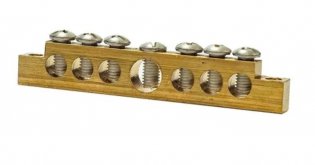
Thanks for your thoughts in advance!
I saw a thread recently where a user shared a near disaster experience where wood planks were in contact with LiFePO4 cells. My personal and non-professional point of view is that wood should be non conductive for 12V~24V.
Should I under no circumstances screw the bus bars to the wood? You think I'm a mad man?
What would you do in my place?
I already have the wood structure ready and the 125A (I think they're some kind of brass alloy) bus bars. They are advertised as (AC) ground bus bars.

Thanks for your thoughts in advance!




